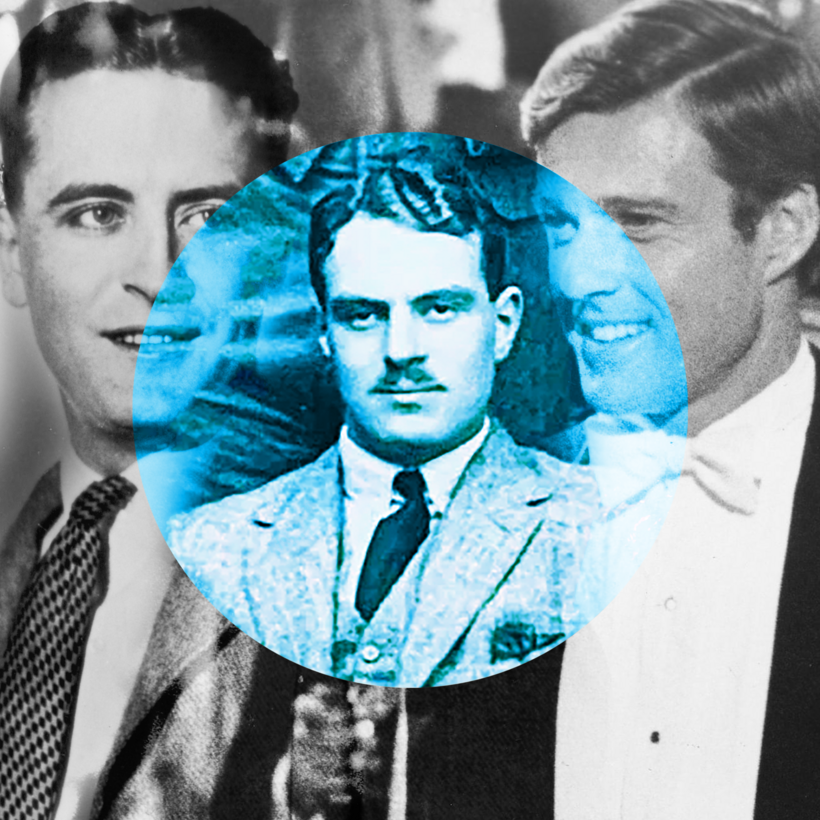Mystique surrounds the fabulously wealthy Jay Gatsby, the eponymous hero of the quintessential American novel. Who exactly is he, where did he come from and how did he make his fortune?
In F. Scott Fitzgerald’s novel, The Great Gatsby, Gatsby is coy – the subject of speculation and envy. He teases those drawn towards him by never quite telling the same story twice.
As in literature, so in life, for literary sleuths have long speculated over the true origins of the titular character, linking him to a range of real people from editor Herbert Bayard Swope to Max von Gerlach, a bootlegger and Long Island neighbor of Fitzgerald’s who is known to have used Gatsby’s signature phrase: “old sport”.
But these individuals made up only fragments of a composite character, and the initial inspiration for Gatsby has remained a mystery.
Until now, that is. New research on the 100th anniversary of the publication of Fitzgerald’s literary masterpiece suggests he modeled Gatsby on a friend, Robert Coffin, a Rhodes Scholar who enrolled at Oxford’s Trinity College in 1916.
The discovery was made by Clare Hopkins, an archivist at Trinity College, and Roger Michel, an American national and a fellow of the college. After poring through historical records, they identified Coffin as “almost certainly the model for young Gatsby”.
Coffin came from a well-known Maine seafaring family and had studied at Princeton at the same time as Fitzgerald.
Moreover, he matched the author’s description of Gatsby, as provided in the novel by the character Tom Buchanan, who describes a man with “tan skin, short hair, powerful build and vacant eyes”.
Coffin dropped his studies at Oxford in order to join the US army when the United States entered the First World War. But he returned to Trinity after the conflict, completing a D Litt in 1922, and went on to win a Pulitzer Prize in 1936, cementing his place as one of the US’s most celebrated poets of the time. He died in 1955.

Gatsby’s own time at Oxford is mentioned briefly – three times – in the novel, and Trinity itself gets a single mention. In one passage, the character describes playing cricket and shows off a photograph of himself standing with other students beneath a gateway at Trinity with “dreaming spires” in the background.
The link between the two (Coffin himself was pictured playing cricket while studying at Trinity and posing with other students in front of university buildings) was established only when Michel asked Hopkins whether any American students who had passed through the college’s doors matched the description of Gatsby.
She subsequently dug out a letter from Coffin to the college president and found the photographs of him and other students.
“Students leave footprints in the college, and there’s a letter from him to the college president after he’s left Oxford when America entered the war, saying it had been the best year of his life,” Hopkins says.
The Great Gatsby’s celebration of unashamed excess captured not only the spirit of jazz-age New York, the backdrop against which the book is set, but also a broader canvas which includes the aftermath of the First World War and the US government’s wish to avoid flooding the labor market by providing educational opportunities for demobilized former officers.
Among the beneficiaries was Coffin himself, one of a number of ex-US servicemen given generous funding to study at Trinity, among other places.
As Hopkins and Michel dug into his personal history, they began to connect the dots between Coffin (who shared a dormitory at Princeton with Fitzgerald) and Gatsby.
Fitzgerald and his wife, Zelda, visited Oxford in 1921. Michel says it’s inconceivable that they would not have spent time with Coffin during the trip – indicating that the latter may have even helped Fitzgerald revise his novel, released in 1925.
“Until now, no one seems to have done the obvious thing: check to see if the person described in Fitzgerald’s novel actually existed. That is to say, were there any Americans who had served in the American Expeditionary Force during World War I, as Gatsby did, who, like Gatsby, matriculated at Trinity after the Great War?” says Michel.
“This was an extraordinary omission. The simple fact is that Fitzgerald must have learnt about the American Expeditionary Force Oxford Study Program from someone who was knowledgeable about it, because he revised the manuscript [of The Great Gatsby] to correct the details. We now know the person who likely provided those details and who almost certainly provided the model for young Gatsby.”
Michel says Fitzgerald and Coffin’s links via their alma mater bolster the argument that the former drew on the latter when crafting his novel.
“Coffin presents an especially strong case [to be the inspiration for Gatsby], as he overlapped with Fitzgerald at Princeton for the three years from 1914 to 1916. Moreover, they had both lived in Blair Hall [a Princeton dormitory] and both been members of the exclusive Cottage dining club,” he says.
Given the “strength and depth of their prior connection”, he adds, “it is inconceivable that the two men would not have connected” when the Fitzgeralds visited Oxford in 1921.
The findings come as Trinity celebrated its links to The Great Gatsby with a sell-out stage performance of a stage adaptation of the novel by undergraduates last week – nodding to the remarkable turnaround in fortunes a story that generated no great wealth for Fitzgerald during his lifetime has enjoyed in the decades since.
Those ties now seem stronger than ever, thanks to Hopkins and Michel. “It’s totally Gatsbyesque,” he says.
Simon de Bruxelles is a London-based journalist

